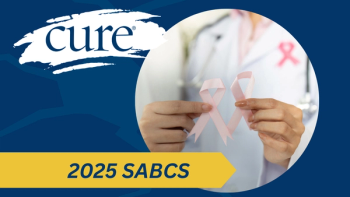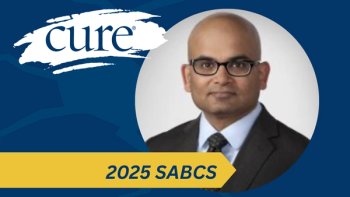
How Patients With Cancer Can Prepare for Virtual Care Visits
With attitudes evolving around telemedicine in oncology, one doctor explains how patients can get ready for a video appointment with their provider.
Telemedicine, the use of communication technology to facilitate virtual visits between patients and physicians, is uniquely well-suited to oncology care, researchers have stated.
Researchers, writing in The Cancer Journal, found that telemedicine represented a strategy to tackle the complexities of cancer care “by simplifying the process of conducting follow-up appointments, making conversations more accessible, reducing certain unseen costs by eliminating travel time and potentially being synergistic with remote symptom and physiologic monitoring. It also allows family members, friends and other caregivers to participate in clinical encounters more readily.”
Attitudes towards telemedicine in oncology have evolved in recent years, as co-author Dr. Sahil Doshi, a medical oncology/hematology fellow at Memorial Sloan Kettering Cancer Center in New York City, explained in an interview with CURE.
“Essentially, prior to 2020 — prior to the COVID-19 pandemic —telemedicine was pretty rarely utilized in cancer care across the country,” he said. “I think there are specific scenarios where it was being used — for example, for patients that were getting genetic counseling or patients that were in survivorship. But for day-to-day routine patient care within oncology, it was really not being used.
“Then of course, when the pandemic started, in-person care was severely affected and places that were providing cancer care had to really adapt what they were doing very rapidly. … A lot of the care has been has gone back to in person, but I would say it really varies from location of, of where the cancer center is across the country, and then the clinicians’ perspectives and patient perspectives. So, in terms of attitudes towards telemedicine, I would say in general, since 2020 patients or patients and clinicians are a lot more open to it, and some definitely prefer it from the patient perspective, especially.”
There are, Doshi said, some downsides to using telemedicine for cancer care. Some patients may not have the internet connection, hardware or comfort with technology required for such visits. Additionally, signs and symptoms of treatment toxicity may not be as readily apparent, Doshi said.
“But overall,” he said, “I think it just is a very promising opportunity to ease the burden of having to do certain visits in person.”
Doshi shared advice for how patients can get the most out of virtual visits with their providers:
- Be Prepared. “The first thing would be just making sure that [patients] have the technology and the knowledge to kind of have that visit and make sure that it goes smoothly,” Doshi said. “So, [they should see] if that center has like a person that they can speak with before the visit, just to make sure that they're able to connect [and] that their audio, their video is working.”
- Invite others to join. “You can invite other family members or friends to join in the visit, and they don't actually have to physically be with you,” he said.
- Get your questions ready. As with a typical in-person visit with their oncologist, patients should prepare a list of the questions they want to ask their provider ahead of time.
- Show and tell. If patients or developing a rash or experiencing other issues that can be more easily seen in person, they can take a photo of it and send it to their clinical team beforehand, Doshi said.
“Being very clear with what symptoms you're experiencing, treating it as close to an in-person visit as possible [is important],” he said. “And [that can include] supplementing that potentially with photos, [or] if something can be seen on a video trying to make it very clear on a video as well.”
For more news on cancer updates, research and education, don’t forget to




